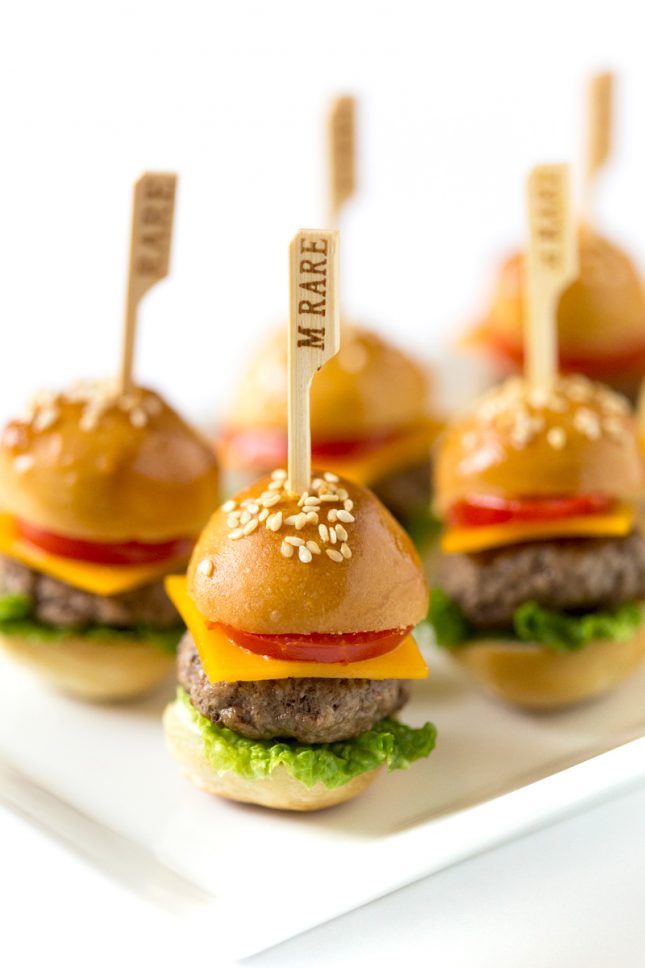Baby food veal
Veal and Veggies Purée - Béaba USA
View all posts filed under Recipe by Age By Age5-6 Months6-9 months7-9 months10-12 months12-18 months18 months+
View all posts filed under Recipe by Ingredient By Ingredient1/2 limeacaiacai pureeagaveagave nectarall purpose flouralmond butteralmond flouralmond milkalmondsappleapple cider vinegarapplesapplesauceapricotsartichokeartichoke heartsasparagusasparagus spearsavocadobaby carrotbaby carrotsbaby cerealbaby formulababy spinachbaking powderbaking sodabananabananasbananas, slicedBanza chickpea pastabartlett pearbasilbasil leavesbeansBeefbeetsberriesblack beansblack cherriesblack pepperblack plumblack riceblack sesame seedsblackberriesblackberries (or mixed berries)blood orangeblue majikblueberriesblueberries or blackberriesblueberrybok choy, choppedbreadbreadcrumbsbreast milk or formulabrewed espressobroccolibroccoli floretsbrown ricebrown sugarbrussels sproutsButterbutter or coconut oilbutter, cut into 1/4 inch cubesbuttermilkbutternut or acorn squashbutternut squashcacao powdercannellini beanscantaloupecardamomcarrotcarrotscashewscauliflowercayenne peppercelerycelery stalkschamoycheddar cheesecheesecherriescherry tomatoeschervilchestnutchia seedschick peaschickenchicken breastchicken breast, cubedchicken brothchickpeaschili powderChinese cabbagechiveschopped red onioncilantrocinnamoncinnamon and/or nutmegClamatocoarse sea saltcoarse sea slat flakescocoa powdercocoa powder (unsweetened)coconutcoconut aminoscoconut creamcoconut flour or flour of choicecoconut meatcoconut milkcoconut oilcoconut oil or buttercoconut sugarcoconut sugar or brown sugarcoconut watercoconut water or milk of choicecoconut yogurtcodcod filletcollard greenscontainer non-fat Greek yogurtCooked beetscooked hamcoriandercorncorn flakes (no sugar)corn kernelscottage cheesecouscouscranberriescranberry juicecream cheesecreamy peanut buttercréme fraichecrumbled feta cheesecrushed tomatoescucumbercumincured spanish chorizocurrycurry powdercurry powercute into cubesdark chocolatedatesde-boned salmondiced bacondiced tomatoesdilldried apricotsdried basildried cranberriesdried dilldried figsdried lavender budsdried parsleydried white beansdurianedamameeggegg whiteegg whitesegg yolkeggplantEggselbow pastaendivesevaporated milkextra virgiin olive oilextra virgin olive oilfava beansfennelfeta cheesefeta cheese crumblesflat-leaf parsleyflaxseedflourflour or vanilla protein powderformula, breast milk or creamfresh basil leavesfresh blueberriesfresh cherriesfresh chivesfresh cilantrofresh coconut meatfresh cranberriesfresh dillfresh garlicfresh gingerfresh ground peanutsfresh ground pepperfresh lemon juicefresh lime juicefresh mintfresh mint leavesfresh mint, dill or cilantrofresh parmesanfresh parsleyfresh peachesfresh peppermintfresh pumpkinfresh rapsberriesfresh raspberriesfresh salmonfresh spinachfresh strawberriesfresh thymefrozen bananafrozen bananasfrozen bananas, slicedfrozen dragon fruit (pitaya)frozen peasfrozen pineapplefrozen strawberriesfull-fat coconut milkgaram masalagarlicgarlic clovegarlic clovesgarlic powdergarlic powder or 1/2 clove of garlicgingergingerbread spicegoat cheesegolden beetsgooseberriesgraham crackersgranny smith appleGreek gourygreek yogurtgreen applegreen beansgreen oniongreen pepperground cardamomground cinnamonground cinnnamonground clovesground corianderground cuminground flax seedground flaxseed or ground chiaground gingerground nutmegground nutmeg or cinnamonground sea saltground turkeyground white pepperguavahaddock fillethalbuthamheavy creamHoneycrisp applehoneydewice cubesItalian dressingjalapeñojalepenokalekiwikumquatsLamblarge carrotLaughing Cow cheeseleekleeksleeks (white parts only)lemonlemon juicelemon slicelemon zestlentilslettucelimelime juicelimesloosely packed kalelycheesmangomango, choppedmangosmaple syrupmatcha powdermedium tomatoesMexican lagermilkmilk of choicemilk of choice or carrot juicemilk or formulamini mozzarella ballsmintmint leavesMix-In Packmixed berriesmolassesmonterey jack cheese blendmozzarella cheesemuesli oatsmushroomsnectarinenon-fat Greek yogurtnoodle of choicenopal/prickly pears (washed, outer skin and seeds removed and cubed)nutmegnutritional yeastoat flouroat milkoatmealoatsof 1-2 horned melonsof one lemonokra podsolive oilolive oil or avocado oiloniononion powderonionsorangeorange juiceorange pepperorange zestoreganoorzopapayapaprikaparmesanParmesan cheeseParsleyparsnipPastapeachpeach or kumquatpeach or nectarinepeachespeanut butterpearpearspears or applespeaspeeled applespeeled carrotspepperpersimmonspine nuts or walnutspineapplepineapple (preferably frozen)pitted datesPlain Cream Cheeseplain greek yogurtplumplum tomatoplum tomatoesplumspomegranate seeds (fresh or frozen)pork tenderloinpotatopotatoespotatoes, cubedpowdered sugar for toppingprepared formulapumpkinpumpkin pie spicePumpkin pureepumpkin pureeepumpkin spice seasoningpurple (Benimo) sweet potatopurple cabbagepurple carrotspurple cauliflowerpurple potatoespurple sweet potatoesquick-cooking oatsquincequinoaraisinsraspberriesraw chia seedsraw chickenraw honeyraw pecansraw unsalted cashewsraw walnutsred bell pepperred onionred pepperred pepper flakesred peppersred potatored seedless grapesrhubarbricericottaripe bananaroast turkeyrolled oatsroquefort cheeserose waterrosemarysage leavessalmonsaltSalt & peppersalt & pepper to tastesalt and peppersalt and pepper to tastesalt to tastescallionssea saltsea salt and pepper to tasteseasoned bread crumbssemi-sweet or dark chocolate chipssemisweet chocolatesesame oilsesame seeds to garnishshallotshallot, mincedsharp white cheddarsherry vinegarShiitake mushrooms, slicedshortbread cookie or biscuitShredded Mozzarellashrimpskim milkslivered almondssmall onionsmall sweet potatosoy saucespinachsplash of watersquashstale breadstarfruitSteviastrawberriessugarsugar or natural sweetenersugar pumpkinsugar, dividedsugar/nautral sweetenersummer squashsunflower oilsweet applesweet applessweet paprikasweet potatosweet potato or yacónsweet potato, cubedsweet potatoessweetened condensed milkswiss chardTabasco saucetahinitajintamarind candy strawstamarind pastetarragontender kale leavesthin crust pizza doughThymetomatotomato pastetomato saucetomatoestoppings of choice (we love coconut, chia seeds and almond butter for toddlers and adults!)tortillatumericturkeyturkey, white meat onlyturmericturnipturnipsugli fruit juice or guava juiceuncooked beetunsalted butterunsweetend coconut flakesunsweetened cocoa powderunsweetened coconutunsweetened coconut milkunsweetened vanilla almond milkvanillavanilla bean extractvanilla bean podvanilla extractvanilla Greek yogurtvanilla yogurtvealveegetable brothvegan chocolatevegetable brothvegetable oilvegetable stockvegggie stockveggie brothwalnut oilwalnutswarm waterwaterwater, breast milk or stockwater, pineapple juice, or milk of choicewatercresswatermelonwheat flourwhipped toppingwhite beanswhite chocolatewhite mushroomswhite onionwhite or brown ricewhite potatowhite sugarwhole milkwhole wheat flourWhole wheat shell pastaworcestershire sauceyamyellow bell pepperyellow onionyellow onion, choppedyellow pepperyellow squashyogurtyoung spinachZa'atarzucchinizucchini, sliced
View all posts filed under Recipe by Type By TypeAppetizerBreakfastDessertDrinkMainMain DishSideSnackFishFruitsGrainsItalianMediterraneanPorkPoultrySweetsThaiVegetarianVeggies
//in 10-12 months, 12-18 months, 18 months+, 7-9 months, Homemade Baby Food Recipes | BÉABA USA Butter, parsnip, potato, veal Main, Main Dish Veggies 0 stars /by Julianna KlepackiParsnips are yet another veggie that are often forgotten when it comes to baby food. We’ve added them to this recipe, which also calls for a less common ingredient – veal. The veal may be replaced by any meat, if desired.
- Course Main, Main Dish
- Cuisine Veggies
Parsnips are yet another veggie that are often forgotten when it comes to baby food. We've added them to this recipe, which also calls for a less common ingredient - veal. The veal may be replaced by any meat, if desired.
Ingredients
Instructions
- Put the parsnip, potato and veal in the steamer basket.
- Pour water into the tank (level 3).
- Start the cooking process.
- When the parsnip, potato and veal are cooked, put them in the blending bowl, reserving the cooking liquid.
- Add the butter and some of the cooking liquid to bring the purée to the desired consistency and blend.
Recipe Notes
As always, please check with your pediatrician before introducing new foods to your baby.
Share this entry
Basic Beef Baby Food Puree (6+ Months)
This homemade Basic Beef Baby Food is a great addition to your baby’s favorite purees for extra protein and flavor! It’s an incredibly simple recipe with big flavor and nutrition! It’s perfect as a Stage One Baby Food – 4-6+ months.
Medically reviewed and co-written by Jamie Johnson, Registered Dietitian Nutritionist (RDN), and Lauren Braaten, Pediatric Occupational Therapist (OT).
Beef Baby FoodBeef, it’s what’s for baby’s dinner! Beef puree, that is. 😉
This beef puree is loaded with so many great nutrients that your baby needs in order to thrive – protein, iron, calcium and folate.
And while it may seem counter-intuitive and perhaps weird (or at least it did to me), beef puree 🥩 is a great first food for your baby.
Just because it’s a nutrient-dense puree doesn’t mean your baby needs bowls upon bowls of it. Since beef puree has a somewhat intense flavor, a few spoonfuls added to your baby’s favorite veggie or fruit puree should be enough.
Is it your first time making homemade baby food? If you answered yes, then I suggest you start this journey by reading my in-depth Guide on How to Make Homemade Baby Food. The detailed article goes over all the essential information such as the best cooking tools to have on hand, safe storage, knowing when your baby is ready for solids, introducing purees, making the best first foods for baby, and more! You can also check out my best-selling cookbook for even more information and recipes.
Beef Puree Video
Watch this video to see how easy it is to make your baby homemade Beef Puree!
Reasons to Love this Beef Puree- simple yet flavorful
- packed with protein
- great to add to any other fruit or veggie puree that baby loves
- baby food for 4-6 months and up
- stage 1 baby food
- freezer-friendly
- homemade
Make sure to read the recipe card below for full ingredients and instructions!
- Beef: Since beef is the star of the show in this puree, we are going to start with a good piece of meat.
 We are going to use 8oz of chuck stew meat or cubed sirloin beef. You can also easily scale up this recipe if you want more than 12 ounces of baby food.
We are going to use 8oz of chuck stew meat or cubed sirloin beef. You can also easily scale up this recipe if you want more than 12 ounces of baby food. - Broth: To get that rich, deep beef flavor, we will cook our beef in beef broth. I recommend using a low-sodium, sodium-free, or free-range beef bone broth for this recipe. You can also use any of those variations above with a vegetable broth as well. If you don’t have any of those on hand, you can use water.
- Oregano: We are adding dried oregano to give the puree a little more complex taste. This can easily be omitted if you prefer or you can substitute in dried parsley, basil, rosemary, thyme or cilantro.
Grass-Fed Beef: I recommend using grass-fed beef for this recipe, if possible. Grass-fed beef will have more healthy fats, more free Omega-3 fatty acids (healthy fats), vitamins A, E, and B as well as more antioxidants.
Health Benefits of Beef
- Protein: Beef is an excellent source of protein, which is essential for proper growth and development of all organ systems and maintaining and repairing tissues.
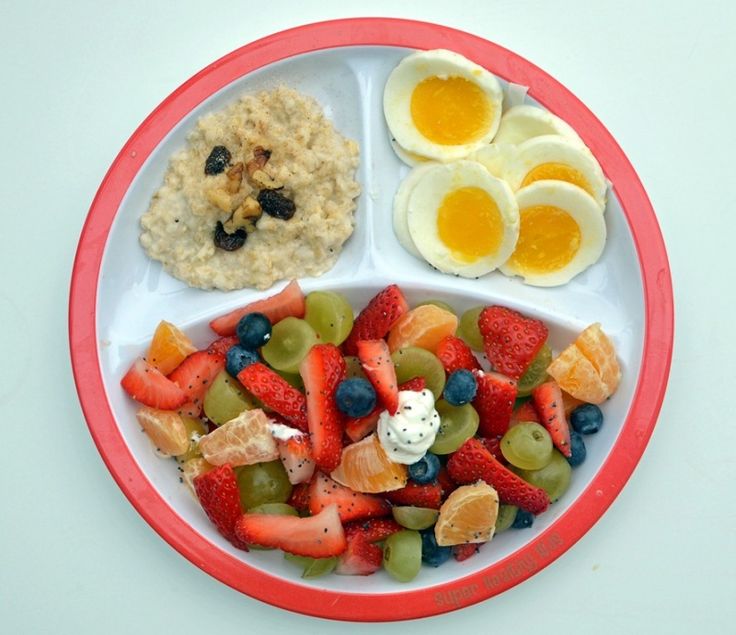 It is considered a complete protein, meaning it has all of the amino acids that are needed to make protein.
It is considered a complete protein, meaning it has all of the amino acids that are needed to make protein. - Iron: Beef is a good source of iron, needed for making red blood cells, neurodevelopment and preventing iron deficiency anemia, and zinc, needed for growth and development and supporting the immune system.
- B12: Beef is also high in B12, which is essential for brain development and healthy red blood cells.
- Choline: can also be found in beef, which is also important for brain growth and development.
- Boil: In a medium saucepan, bring the cubed beef, broth, and oregano to a boil over medium heat.
- Simmer: Turn the heat down to low and cover the saucepan. Simmer for 15-20 minutes or until the beef is just cooked through. Let it cool slightly.
- Puree: Using a slotted spoon, transfer the beef to a blender or food processor and puree until you reach your desired consistency, adding broth in 1/4 cup increments if needed.

- Eat: Serve to your baby plain or added into another puree.
- Freeze: Store a small portion in the fridge and freeze the rest for another meal.
These tools will make it a lot easier for you to make this healthy Beef Puree. For more of my favorite kitchen tools make sure to check out my shop.
- Saucepans
- Blender or Food Processor
- Freezer Tray
- Storage Containers for Fridge
- Stasher Bag
- bib with catch pocket
- Saucepans
Frequently Asked Questions
When can baby eat beef puree?
Babies can have beef as one of their first foods. When a baby can start on solids is determined by their own rate of development, which generally comes between 4-6 months of age. Some of the developmental milestones babies need to reach in order to start solids include: if your baby has solid control of their head and neck, if your baby has doubled in weight, and if your baby is reaching for or opening their mouth when you eat (see my guide here). Before you start your baby on purees, you should consult with your pediatrician to make sure your child is developmentally ready.
Before you start your baby on purees, you should consult with your pediatrician to make sure your child is developmentally ready.
Can beef be baby’s first food?
Yes, beef can 100% be baby’s first food if you want it to be. It is recommended to wait to introduce the top eight allergen foods to baby once a few other well tolerated foods have been introduced, but otherwise foods can be introduced in any order so choose whatever you are most excited for baby to have.
Is beef a common allergen for baby?
No, beef is not a common allergen, however, as with any food, start with a small portion and be aware of any signs that might be an allergic reaction after introducing it.
Does beef cause constipation for babies?
No, beef itself is not known to cause constipation in babies, however it won’t really help with constipation either since it lacks fiber. If baby is eating too much meat, it could replace fiber-rich foods, which could cause constipation.
You can store this puree in an airtight container in the fridge for up to 3 days.
FreezerThis puree can be frozen for up to 2 months.
- Spoon puree into a freezer storage container. Do not overfill.
- Place the lid on the storage container or cover with a piece of saran wrap, and label with the date and recipe name.
- Place the tray into the freezer and let it freeze completely — preferably overnight.
- Pop out the baby food cubes and place them in a ziplock baggie or stasher bag. Don’t forget to relabel the baggie or stasher bag for future reference.
Need more information on how to store your baby foods? Head over to my Best Baby Food Storage Containers – Plus 6 Tips on Freezing and Thawing post!
Label Tip: Don’t forget to label your purees before you place them in the fridge or freezer with the name of the puree and the date you made it. Take it from me; by the end of the week, you will completely forget what is in your freezer and how long it’s been there. 😉
Take it from me; by the end of the week, you will completely forget what is in your freezer and how long it’s been there. 😉
While this beef baby food is great by itself, it can be a little intense for some babies. I recommend mixing it into one of your baby’s favorite purees as an introduction to the rich taste of beef. Here are some great purees to mix with the beef puree:
- Apples
- Sweet Potato
- Pear
- Carrot
- Broccoli
- Pea
- Mango
PUREE FEEDING TIPS
- Follow your baby’s lead – when feeding purees from a spoon, sometimes there’s a tendency to keep offering bites past the point of your baby being full. Always follow your baby’s cues for when they are done eating. Turning away from the spoon, closing her mouth, or pushing food away are all signs that your baby is finished with the meal.
- Try adding a little seasoning or spice to purees – babies like flavor! Or consider changing the temperature of purees from time to time, to slightly warmed or slightly chilled.
 Varying these aspects adds to the sensory experience!
Varying these aspects adds to the sensory experience! - Throwing spoons is a common phase that all babies go through at one point or another. One of the best ways to handle spoon throwing is to ignore it and keep feeding your baby as usual (with an extra spoon you already have at the table). If your baby ends up also throwing back up spoons #2 AND #3, simply encourage your baby to eat with their hands until they appear to be finished with the meal. ***Give baby plenty of opportunities to practice putting items in and taking items out of containers outside of mealtimes.
- Use a Slotted Spoon: When transferring the cooked beef from the saucepan to the blender, make sure to use a slotted spoon so you don’t add too much broth into the puree from the start. You only want to add broth if needed while blending. I had to add a 1/4 cup of broth to the blender while I was pureeing this beef.
- Reheat Gently: If you are freezing some of this beef puree, reheat it in 20-second intervals.
 You don’t want to recook the beef.
You don’t want to recook the beef.
- 8 ounce beef chuck stew meat, or cubed sirloin beef
- 2 cups beef or vegetable broth, low or no sodium
- 1 tsp dried oregano
Boil: In a medium saucepan, bring beef, broth and oregano to a boil over medium heat. Turn to low and simmer for 15-20 minutes or until beef is cooked all the way through. Let cool slightly.
Transfer: Using a slotted spoon, transfer the beef to a blender or food processor, reserve broth.
Puree: starting on low and working your way up to high-speed, puree the beef until you reach your desired consistency, adding in broth in 1/4 cup increments if needed.
 I had to add in just 1/4 cup of broth to get the consistency seen in this photo.
I had to add in just 1/4 cup of broth to get the consistency seen in this photo.Eat: serve to baby plain or added into another puree.
Freeze: store a small portion in the fridge and freeze the rest for another meal.
Age: 4-6 months and up
Yield: 12 ounces
Storage: Fridge – store in an airtight container in the fridge for up to 4 days or in the freezer for up to 4 months.
Saucepan
Blender
Bumkins Baby Bowl
Freezer Tray
Did you make this recipe?
Tag @babyfoode on Instagram and hashtag it #babyfoode!
Pin Recipe Email a Friend
Calories Baby food, Meat, veal, puree.
 Chemical composition and nutritional value.
Chemical composition and nutritional value. Chemical composition and nutritional analysis
Nutritional value and chemical composition
"Baby food, Meat, veal, puree" .The table shows the content of nutrients (calories, proteins, fats, carbohydrates, vitamins and minerals) per 100 grams of the edible part.
| Nutrient | Number | Norm** | % of the norm in 100 g | % of the norm in 100 kcal | 100% normal |
| Calories | 81 kcal | 1684 kcal | 4.8% | 5.9% | 2079 |
| Proteins | 13. 12 12 | 76 g | 17.3% | 21.4% | 579 g |
| Fats | 2.45 g | 56 g | 4.4% | 5.4% | 2286 g |
| Carbohydrates | 1.51 g | 219 g | 0.7% | 0.9% | 14503 |
| Water | 82.37 g | 2273 g | 3. 6% 6% | 4.4% | 2759 g |
| Ash | 0.54 g | ~ | |||
| Vitamins | |||||
| Vitamin B1, thiamine | 0.023 mg | 1.5 mg | 1.5% | 1.9% | 6522 g |
| Vitamin B2, riboflavin | 0.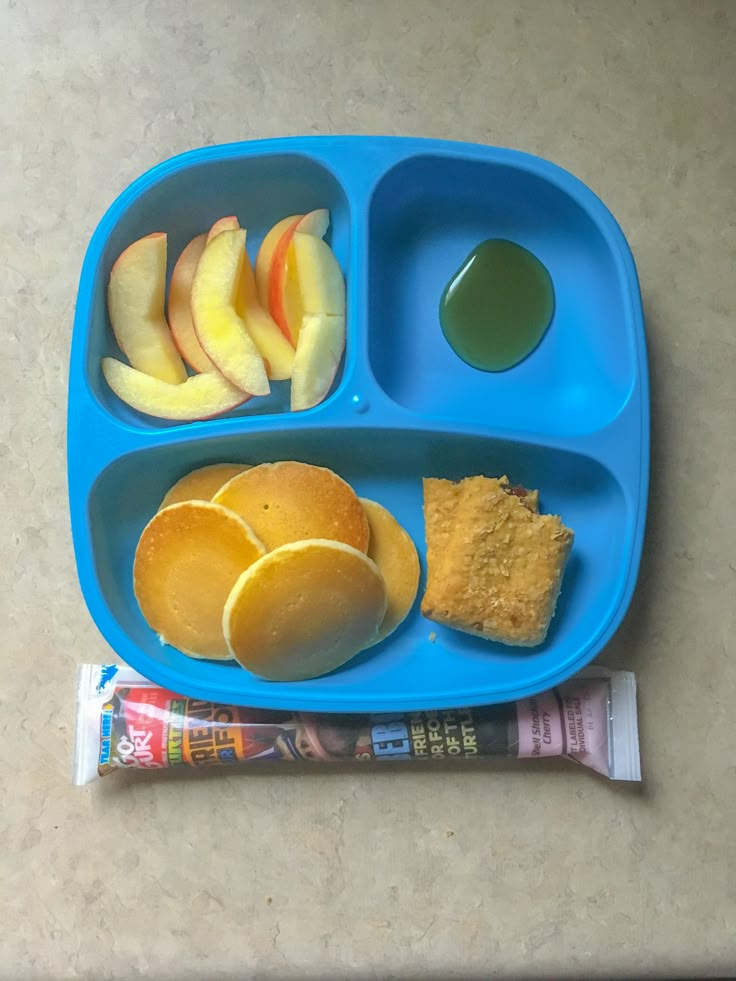 116 mg 116 mg | 1.8 mg | 6.4% | 7.9% | 1552 g |
| Vitamin B4, choline | 49.5 mg | 500 mg | 9.9% | 12.2% | 1010 g |
| Vitamin B5, pantothenic | 0.155 mg | 5 mg | 3.1% | 3.8% | 3226 g |
| Vitamin B6, pyridoxine | 0.049 mg | 2 mg | 2. 5% 5% | 3.1% | 4082 g |
| Vitamin B9, folates | 5 mcg | 400 mcg | 1.3% | 1.6% | 8000 g |
| Vitamin B12, cobalamin | 1.65 mcg | 3 mcg | 55% | 67.9% | 182 g |
| Vitamin D, calciferol | 0.7 mcg | 10 mcg | 7% | 8.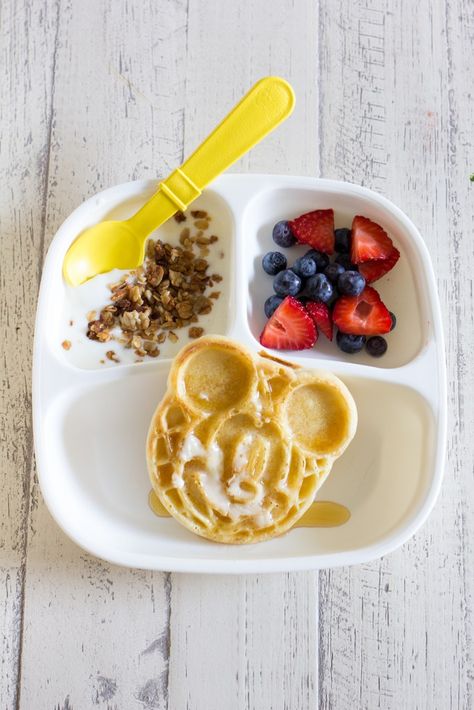 6% 6% | 1429g |
| Vitamin E, alpha tocopherol, TE | 0.28 mg | 15 mg | 1.9% | 2.3% | 5357 g |
| gamma Tocopherol | 0.01 mg | ~ | |||
| Vitamin PP, NE | 2.85 mg | 20 mg | 14.3% | 17.7% | 702 g |
| Betaine | 6. 9 mg 9 mg | ~ | |||
| Macronutrients | |||||
| Potassium, K | 170 mg | 2500 mg | 6.8% | 8.4% | 1471 g |
| Calcium Ca | 6 mg | 1000 mg | 0.6% | 0. 7% 7% | 16667 |
| Magnesium, Mg | 11 mg | 400 mg | 2.8% | 3.5% | 3636 g |
| Sodium, Na | 39 mg | 1300 mg | 3% | 3.7% | 3333 g |
| Sulfur, S | 131.2 mg | 1000 mg | 13.1% | 16.2% | 762 g |
| Phosphorus, P | 98 mg | 800 mg | 12.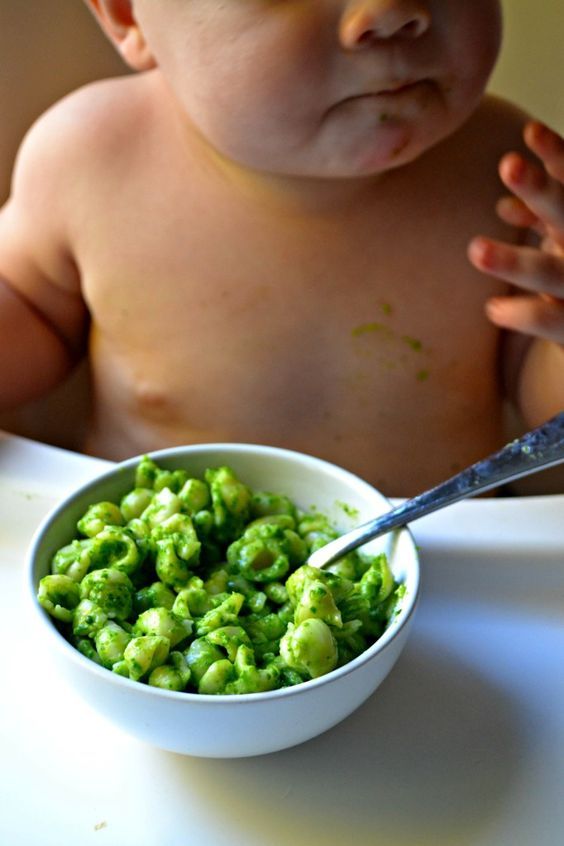 3% 3% | 15.2% | 816 g |
| Trace elements | |||||
| Iron, Fe | 0.76 mg | 18 mg | 4.2% | 5.2% | 2368 g |
| Manganese, Mn | 0.037 mg | 2 mg | 1.9% | 2.3% | 5405 g |
| Copper, Cu | 148 mcg | 1000 mcg | 14. 8% 8% | 18.3% | 676 g |
| Selenium, Se | 3.5 mcg | 55 mcg | 6.4% | 7.9% | 1571 g |
| Fluorine, F | 1.3 mcg | 4000 mcg | 307692 g | ||
| Zinc, Zn | 2.5 mg | 12 mg | 20.8% | 25.7% | 480 g |
| Sterols (sterols) | |||||
| Cholesterol | 33 mg | max 300 mg | |||
| Saturated fatty acids | |||||
| Saturated fatty acids | 1. 063 g 063 g | max 18.7 g | |||
| 12:0 Lauric | 0.009 g | ~ | |||
| 14:0 Myristic | 0.131 g | ~ | |||
| 15:0 Pentadecanoic | 0.009 g | ~ | |||
| 16:0 Palmitic | 0. 575 g 575 g | ~ | |||
| 17:0 Margarine | 0.026 g | ~ | |||
| 18:0 Stearic | 0.314 g | ~ | |||
| Monounsaturated fatty acids | 1.054 g | min 16.8 g | 6.3% | 7.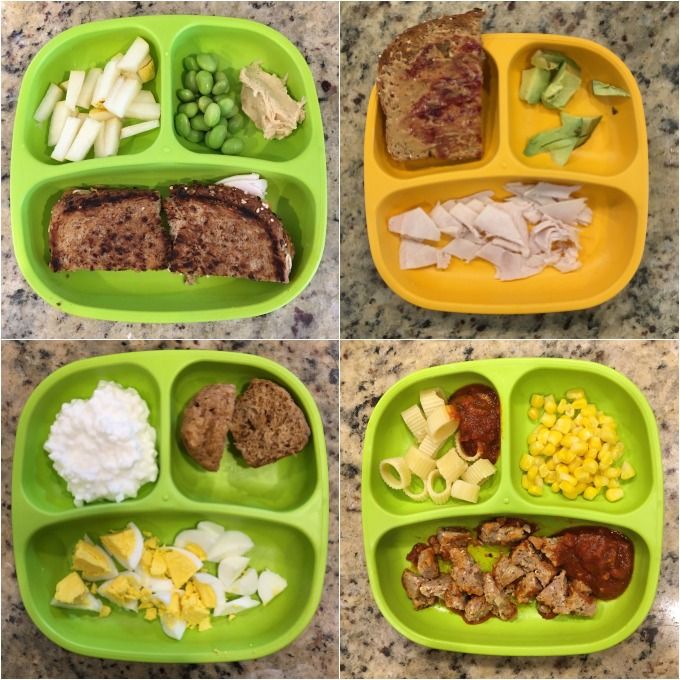 8% 8% | |
| 14:1 Myristoleic | 0.026 g | ~ | |||
| 16:1 Palmitoleic | 0.105 g | ~ | |||
| 17:1 Heptadecenoic | 0.017 g | ~ | |||
| 18:1 Oleic (omega-9) | 0. 898 g 898 g | ~ | |||
| 20:1 Gadoleic (omega-9) | 0.009 g | ~ | |||
| Polyunsaturated fatty acids | 0.157 g | 11.2 to 20.6 g | 1.4% | 1.7% | |
| 18:2 Linoleic | 0.104 g | ~ | |||
| 18:3 Linolenic | 0. 017 g 017 g | ~ | |||
| 18:4 Stioride Omega-3 | 0.017 g | ~ | |||
| 20:4 Arachidon | 0.017 g | ~ | |||
| Omega-3 fatty acids | 0.034 g | 0.9 to 3.7 g | 3.8% | 4. 7% 7% | |
| Omega-6 fatty acids | 0.121 g | 4.7 to 16.8 g | 2.6% | 3.2% |
Energy value Baby food, Meat, veal, puree is 81 kcal.
- tbsp = 16g (13 kcal)
- oz = 28.35g (23 kcal)
- jar = 71g (57.5 kcal)
Main source: USDA National Nutrient Database for Standard Reference. More.
** This table shows the average norms of vitamins and minerals for an adult. If you want to know the norms based on your gender, age and other factors, then use the application "My Healthy Diet"
Product calculator
Nutritional information per 100 g
| Content per serving | % of RSP | ||
| Calories | 81 kcal | -% | |
| Proteins | 13. 12 12 | -% | |
| Fats | 2.45 g | -% | |
| Carbohydrates | 1.51 g | -% | |
| Dietary fiber | 0 g | -% | |
| Water | 82.37 g | -% | |
Go to the food diary
Vitamins and minerals
Most foods cannot contain the full range of vitamins and minerals. Therefore, it is important to eat a variety of foods to meet the body's needs for vitamins and minerals.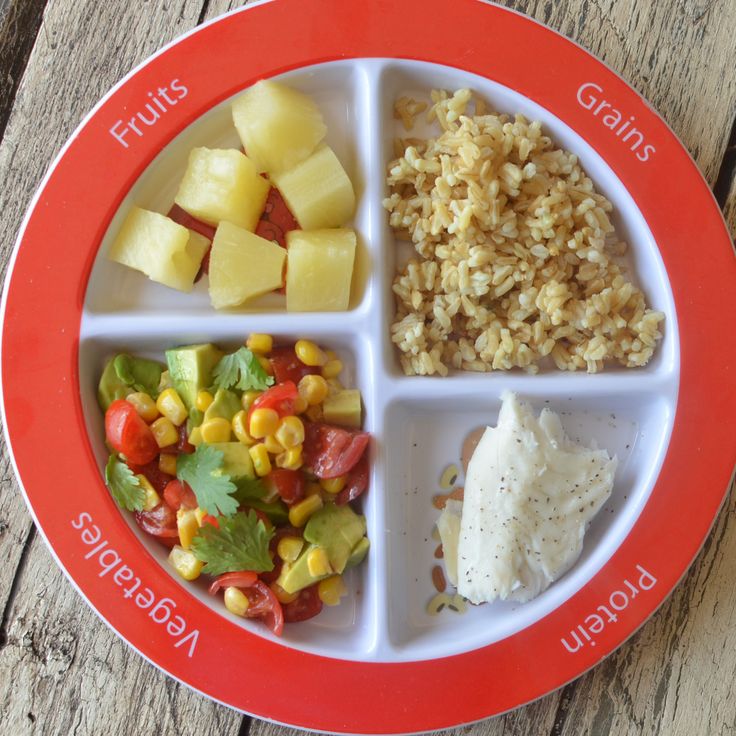
Find out the content of vitamins and minerals in your menu
Analysis of the calorie content of the product
The ratio of proteins, fats and carbohydrates:
Find out your energy balance for the whole day
Knowing the contribution of proteins, fats and carbohydrates to calorie content, you can understand how a product or diet meets the standards of a healthy diet or the requirements of a particular diet. For example, the US and Russian Departments of Health recommend that 10-12% of calories come from protein, 30% from fat, and 58-60% from carbohydrates. The Atkins diet recommends low carbohydrate intake, although other diets focus on low fat intake.
Calculate your norms
If more energy is expended than supplied, then the body begins to use fat reserves, and body weight decreases.
Get recommendations
Get more information and make it happen with our free online course.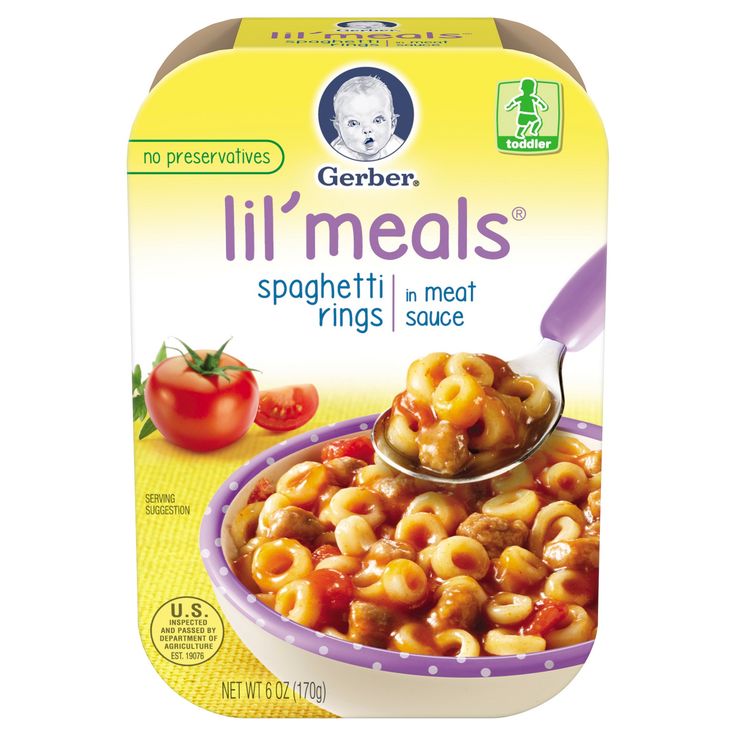
Learn online weight loss course
Try filling out a food diary right now without registering.
Complete the food diary
Find out your additional calorie expenditure for training and get detailed recommendations absolutely free.
Fill in the training diary
Deadline for achieving the goal
Baby food, Meat, veal, mashed potatoes is rich in vitamins and minerals such as: vitamin B12 - 55%, vitamin PP - 14.3%, phosphorus - 12.3%, copper - 14.8%, zinc - 20.8%
- Vitamin B12 plays an important role in the metabolism and conversion of amino acids. Folate and vitamin B12 are interrelated vitamins involved in hematopoiesis. A lack of vitamin B12 leads to the development of partial or secondary folate deficiency, as well as anemia, leukopenia, and thrombocytopenia.

- Vitamin PP is involved in redox reactions of energy metabolism. Inadequate vitamin intake is accompanied by a violation of the normal state of the skin, gastrointestinal tract and nervous system.
- Phosphorus takes part in many physiological processes, including energy metabolism, regulates acid-base balance, is part of phospholipids, nucleotides and nucleic acids, is necessary for the mineralization of bones and teeth. Deficiency leads to anorexia, anemia, rickets.
- Copper is part of the enzymes that have redox activity and are involved in the metabolism of iron, stimulates the absorption of proteins and carbohydrates. Participates in the processes of providing tissues of the human body with oxygen. Deficiency is manifested by violations of the formation of the cardiovascular system and skeleton, the development of connective tissue dysplasia.
- Zinc is part of more than 300 enzymes, is involved in the synthesis and breakdown of carbohydrates, proteins, fats, nucleic acids and in the regulation of the expression of a number of genes.
 Insufficient intake leads to anemia, secondary immunodeficiency, liver cirrhosis, sexual dysfunction, and fetal malformations. Recent studies have revealed the ability of high doses of zinc to disrupt the absorption of copper and thereby contribute to the development of anemia.
Insufficient intake leads to anemia, secondary immunodeficiency, liver cirrhosis, sexual dysfunction, and fetal malformations. Recent studies have revealed the ability of high doses of zinc to disrupt the absorption of copper and thereby contribute to the development of anemia.
You can find a complete guide to the healthiest foods in the My Healthy Diet app.
Calorie content and chemical composition of other products
- Baby food, Meat, pork, puree
- Baby food, Meat, ham, puree
- Baby food, Meat, lamb, puree
- Baby food, Meat, chicken, puree
- Baby food, Meat, turkey, puree
- Home
- Composition of products
- Composition baby food
- Chemical composition "Baby food, Meat, veal, puree"
Tags:
Baby food, Meat, veal, pureeCalorie content 81 kcal, chemical composition, nutritional value, vitamins, minerals , Meat, veal, mashed potatoes
Calculators
Baby food puree veal with vegetables Hipp
Dishes
keyboard_arrow_right
Dishes
keyboard_arrow_right 9Ol000
Carbohydrate 6.



